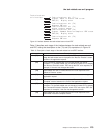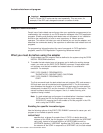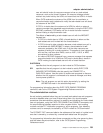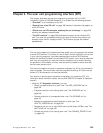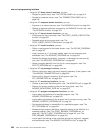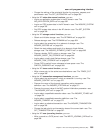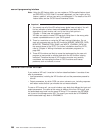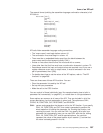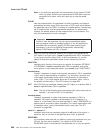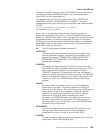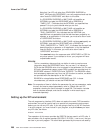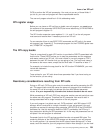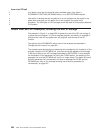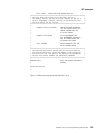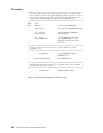The general format (omitting the assembler-language continuation character) of all
XPI calls is:
macro-name [CALL],
[CLEAR],
[IN,
FUNCTION(call_name),
mandin1(value),
mandin2(value),
...
[optin1(value),]
[optin2(value),]
...]
[OUT,
mandout1(value),
mandout2(value),
...
[optout1(value),]
[optout2(value),]
...
RESPONSE,
REASON]
XPI calls follow assembler-language coding conventions:
v The “macro-name” must begin before column 16.
v The continuation lines must begin in column 16.
v There must be no embedded blanks apart from the blank between the
macro-name and the first keyword (usually CALL).
v Entries on lines other than the final line must end with a comma.
v Lines other than the final line must have a continuation character in column 72.
v Parentheses around the input and output values are required—and if you use a
register reference as an input or output value, it must be enclosed in an inner
pair of parentheses, thus: ((R6)).
v For details about how to set the values of the XPI options, refer to “The XPI
functions” on page 298.
There are three uses of these XPI functions. You can:
v Clear the parameter list used by the XPI call
v Set up the input parameters
v Make the call to the CICS function.
You can code all of these individually (see “An example showing how to build a
parameter list incrementally” on page 297), or include them in a single statement.
Some options are common to all uses of the XPI. They are included in all of the
syntax descriptions, but their explanation is given here. The options are CALL,
CLEAR, IN, FUNCTION, OUT, RESPONSE, and REASON.
CALL causes code generation that issues a call to the XPI function. If you specify
CALL, IN, FUNCTION, and OUT, then code is generated to perform the
whole operation of building the parameter list, invoking the function, and
receiving the result. You can omit the CALL, but specify IN to build your
parameter list incrementally; later you can use CALL with that list, coding
CALL, IN, FUNCTION, OUT, and all required options. You can then
represent the values of the preset options by an asterisk (*) to show that
the value is already present in the list.
form of an XPI call
Chapter 3. The user exit programming interface (XPI) 287



